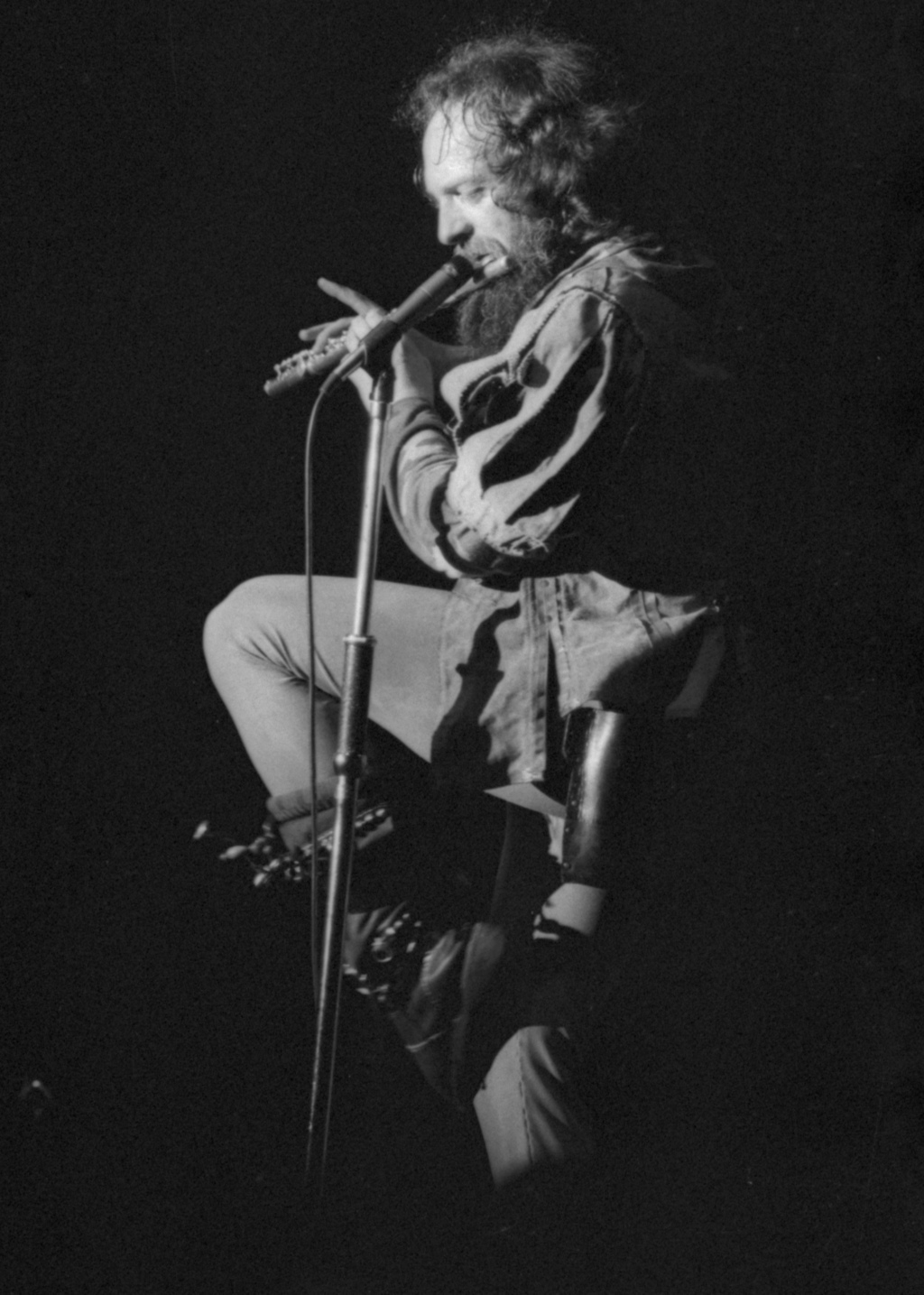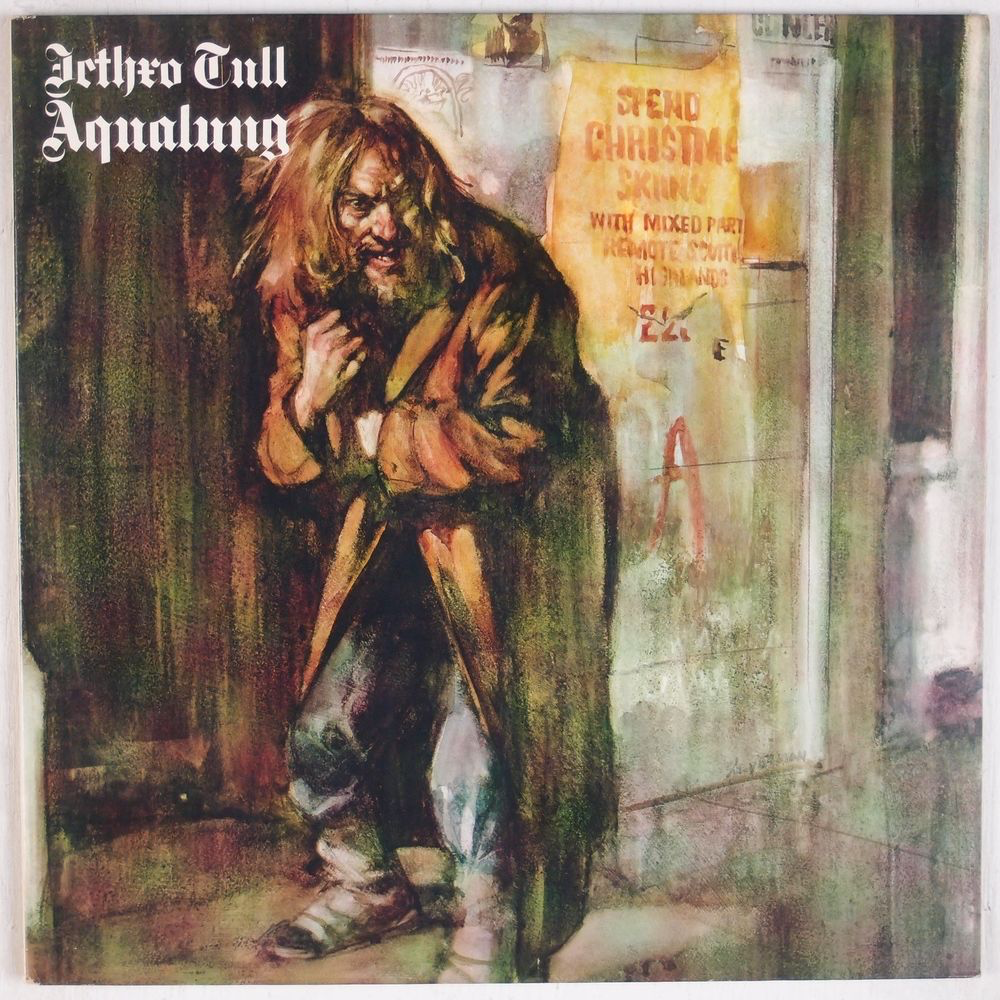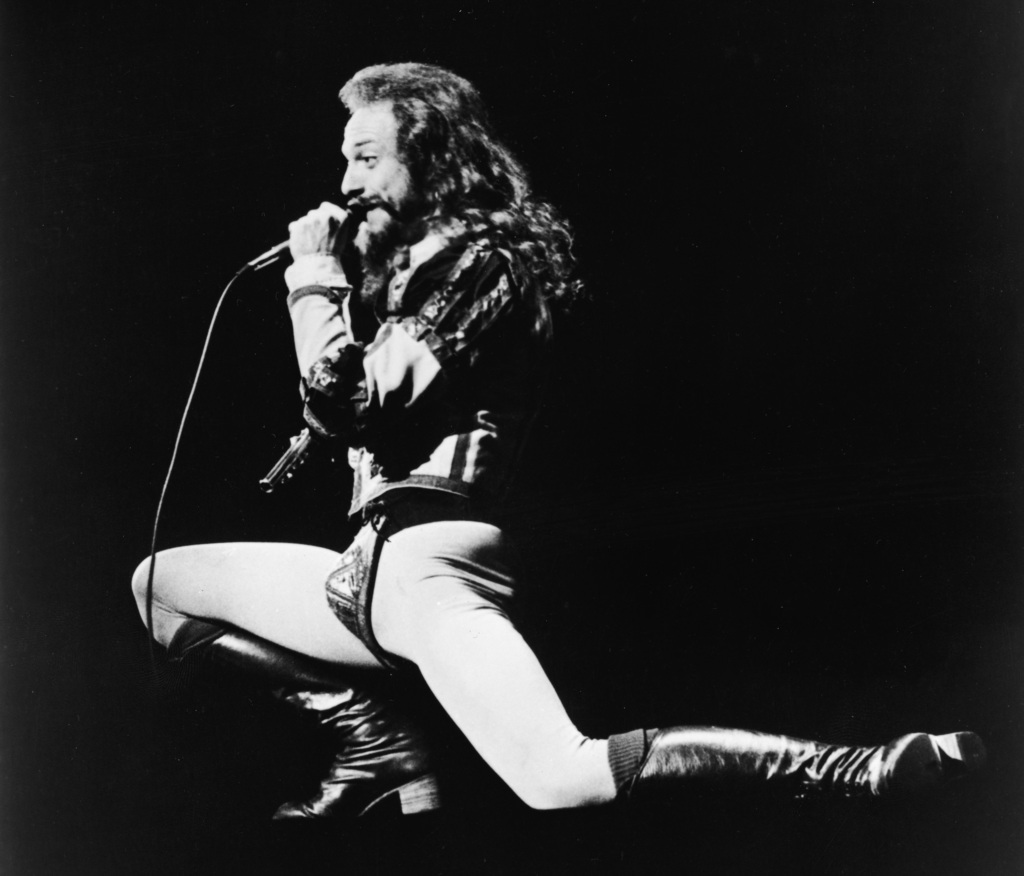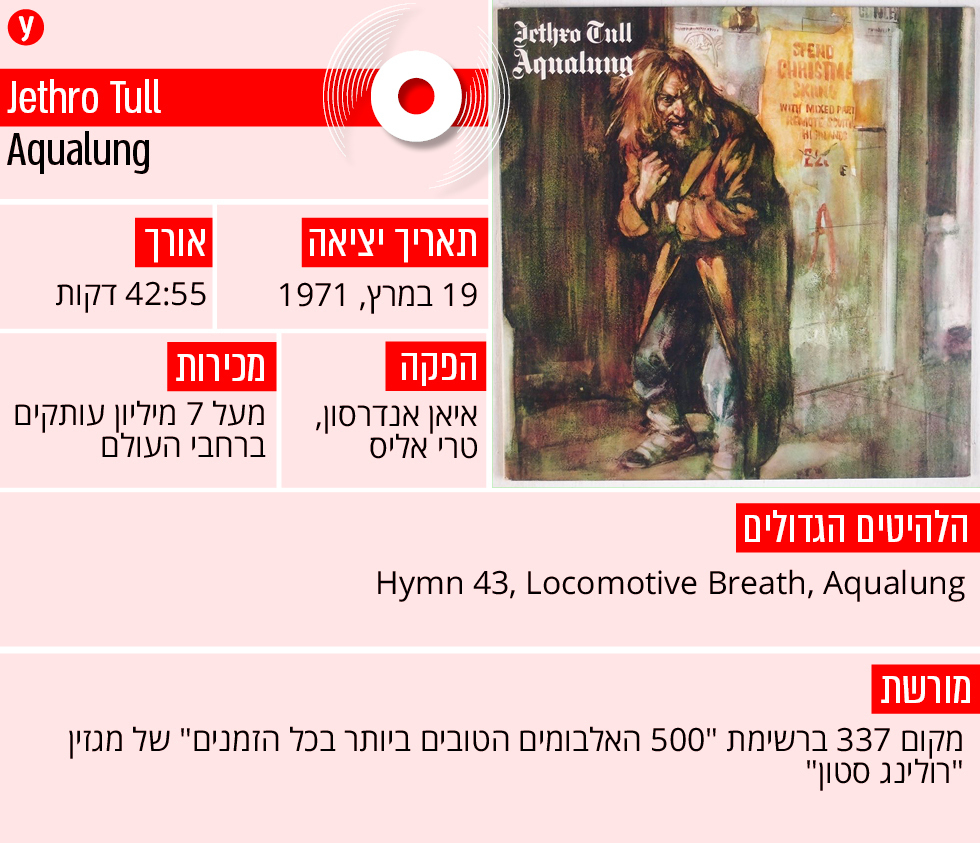
6 View the gallery


The Man and the Magic Flute. Ian Anderson in 2008
(Photo: AP)
A few months ago, Anderson revealed the reason for his disappearing singing ability. The legendary singer and musician has stated that he has contracted an incurable lung disease for a few days. He did not hang the blame for his condition on smoking but rather on the smoke machines that accompanied him on stage for many decades. Luckily for us, Anderson, a likable 73-year-old Scottish, is still here, but it’s not at all certain that he will return to the stages even when the performance market returns to full activity after the Corona. So all that is left for his fans, apart from wishing him good health, is to console himself with the great albums he has created with the band from the late 60s and throughout the 70s, led by Aqualung, on the 50th anniversary of his release.
6 View the gallery


Members of the band Jethro Tal, 1970
(Photo: Hulton Archive / Getty Images)
In the fall of that year the members started working on the album that would later become their biggest and best known. The line-up has changed again (and not for the last time), with the quartet now becoming a quintet, following the addition of pianist John Evan. When the friends went to Island Records Studios in London to record, they were not there alone. While Anderson and his partners worked in the big studio, the members of Led Zeppelin populated its smaller counterpart, on the way to completing their fourth and untitled album. There were no spontaneous collaborations between the two, as the studio directors made sure that the bands did not work overtime. Zeppelin was already big in every aspect from Jethro Tal (and she will be even bigger than her later in the decade), but the latter needed a wider living space to accommodate the variety of wind, bow and percussion players recruited for the recordings as well as the male choir that participated in the song My God. Anyone looking for another point of similarity between the bands then, will find it Broy Harper, the great British folk musician. The Zeppelin dedicated a song to him and the band’s guitarist Jimmy Page did a lot to collaborate with over the years, and Anderson was inspired to write one of the most beautiful moments in Aqualung – the acoustic song Mother Goose.
Although Anderson was not particularly enthusiastic about the conditions in the studio or his acoustics, the technical issues were resolved fairly quickly and the album began to crystallize. The result was a beautiful blend of quite a few styles: folk, blues, psychedelia, religious, classical music, jazz and hard rock. The heavy sounds that characterized songs like Locomotive Breath and Hymn 43, which were also the only singles to come out of the album, and of course Beer’s great riffs that open the theme song, led to sales of seven million copies, making the album the band’s most successful and successful product.
The musical diversity and length of some of the songs here – Aqualung (about six and a half minutes), My God which opens the second side of the record (more than seven minutes) and Wind-Up the seal (six minutes) – belonged to Jethro Tal to the progressive rock stream that began Flourish at that time. Anderson, a humorous man who was influenced quite a bit by the Monty Python gang, was not exactly enthusiastic about this labeling. Mostly he disliked the idea that Aqualung is a “concept album” even though his songs mostly revolved around one theme – the distinction between religion and God. At one point, realizing that his persuasion efforts were falling on deaf ears (they were actually listening to music), he decided that on the band’s next album, Thick as a Brick, released a year later in 1972, he would stretch that concept to the limit. And so he awarded along one song (each half of which filled a different side of the record), a frame story that attacked and exposed the hypocrisy of British society. The album cover and the campaign that promoted it were composed of newspapers in which imaginary and fabricated articles appeared. Unlike the rest of the band’s albums, this Pike-News gimmick worked great in the United States, and the album took first place in the sales charts.
6 View the gallery


Tremendous balance. Anderson in his favorite pose
(Photo: AP)
With or without a concept, the musical richness that makes up Aqualung is impressive from the very first note. The opening theme song does not leave the listener for a moment. It starts as an effective and sweeping hard rock piece with wild vocals, heavy guitars and presence drums. Then Anderson breaks the line, and moves on to singing in a much calmer and more relaxed manner with the leading accompaniment being the acoustic guitar. But that is not the end of the saga. The slow folk are slowly painted in shades of rock and jazz and the instruments that are gradually added increase and enrich the rhythm. After the heavy guitar solo, the circle becomes perfect as the song returns to the fiery energies with which it opens. There aren’t many opening songs stronger than these, not even in that wondrous decade.
In contrast, My God, which opens the other side of the record, presents a sort of mirror image of him. It opens as a musical piece with a church atmosphere and only later becomes a rock song with a more standard structure. My God was also the cover of the album on the second side of the album, in which some of the songs, including My God, Hymn 43 and Wind Up, refer to religion in a disparaging and dubious way. Another Christian context here can be seen in the Gothic font chosen for the inscription on the front and back cover. Even the songs Slipstream and Locomotive Breath that appeared on the album will not exactly please the devout Christian listener.
Almost every major album also has a beautiful cover with a story behind it. This is also the case with Aqualung. Despite the considerable physical resemblance (wild beard and long hair), the character painted on the album cover is not of Anderson, but of a homeless man who wandered along the banks of the Thames. Jenny Franks, Anderson’s wife, had a somewhat strange hobby: she used to photograph the homeless living in this area of London. One of them was the man who was finally immortalized in the painting on the cover. The same homeless man also inspired the writing of the theme song (for which Franks received credit along with her husband), and later other songs that appeared on the first page of the album, dealing with those left behind and doomed to live on the margins of modern society, like the poor student forced into prostitution. Cross-Eyed Mary. My friend connected with the personal when the meetings Anderson had with his sick father in those days also found their way to the album. Anderson wanted the original picture of his wife to hang on the cover, but a watercolor-inspired painting was eventually commissioned from Burton Silverman for $ 1,500. The value of the painting has of course risen over the years, but even the richest and most determined admirer of the Tals will have a hard time becoming its rightful owner, as it has been lost.
6 View the gallery


Album cover Aqualung
(Screenshot)
While there is no debate about the importance of Aqualung and the way it has branded Jethro Tale as one of the most successful (advanced or not) rock bands of the early ’70s, its sound remains a bit controversial. One of those who have been in love with the album for years is Steve Harris, the bassist and founder of the British heavy rock band Iron Maiden, who made sure that his friends would also record a version of one of his songs. In contrast, Stephen Wilson, a former fresh forked man, was less excited about the original mix and in 2011, on the occasion of the album’s 40th anniversary release, made him a new and improved mix (both editions are available on streaming services). Since then, Wilson has handled quite a few of the band’s albums and has become one of the busiest restaurateurs in the music world.
Aqualung was the artistic and commercial highlight of Anderson and his friends, but it was certainly not their end. The summary of the following episodes on one foot includes the real and no less recommended concept album, Thick as a Brick. Later, they got a bit lost with two rather complex albums, A Passion Play and War Child. In the second half of the 70’s they broke away from the prog and were reborn as a successful folk band with high environmental awareness, as can be heard on the beautiful albums Songs from the Wood and Heavy Horses.
When the Eighties came the classic Jethro Tal virtually ceased to exist. A, the album with which they opened the decade, began as Anderson’s solo album when it was only later that the other members of the band were recruited, which again underwent personnel changes. In 1983, Anderson, a follower of the folk and flute, released his first solo album called Walk Into Light, which included extensive use of synthesizers. In the spirit of that time the idea might have been called for, but the result was far from impressive.
Jethro Tull continued to release albums and in 1988 they even beat Metallica and won the Grammy Award in the Metal Album of the Year category. But the frequent changes in their musical line made it difficult to create a new audience, and most importantly, in keeping the veteran listeners who did not understand why they kept insisting on reinventing themselves every time.
6 View the gallery


Appeared in the country nine times. Anderson in 1973
(Photo: Hulton Archive / Getty Images)
In the mid-1980s, the band members began their long affair with Israel. They visited here nine times, even at times when others feared or refused to come, and even included some songs played here on albums that perpetuated their tour appearances. The Israeli audience played their part in the deal and recorded a nice turnout at each meeting, and Anderson tried to provide the closest thing he could to the perfect concerto for the band and flute that he and his friends premiered in March 1971. Those who came out of these performances a little disappointed The remaining rock diamond is complex and special even after 50 years.
6 View the gallery

